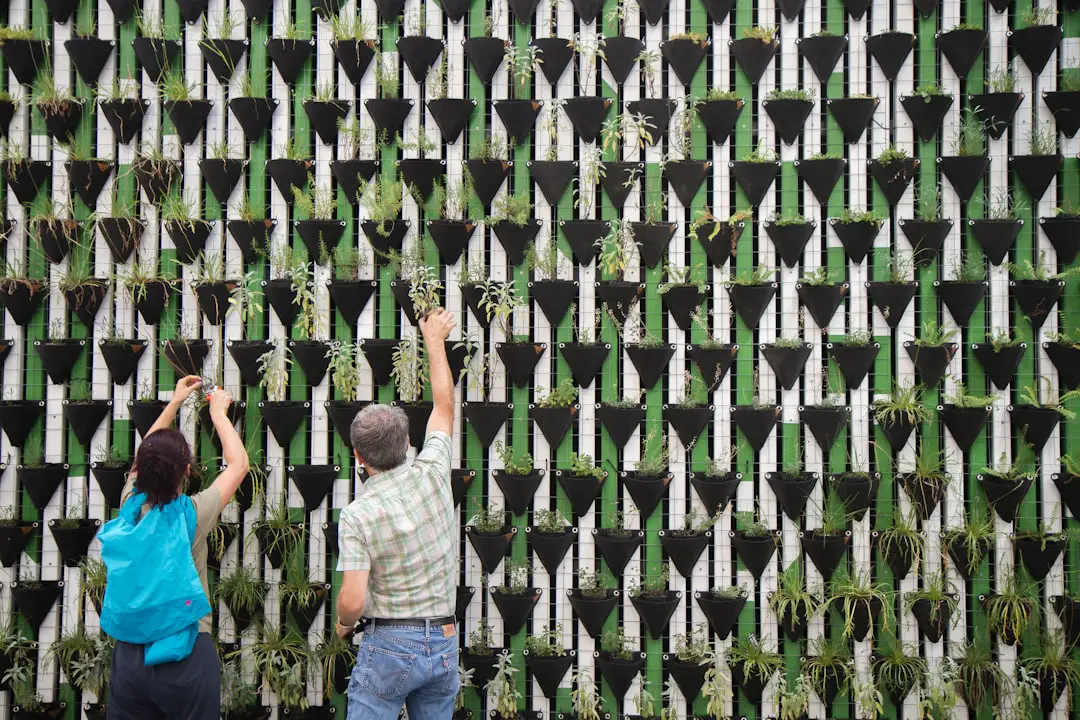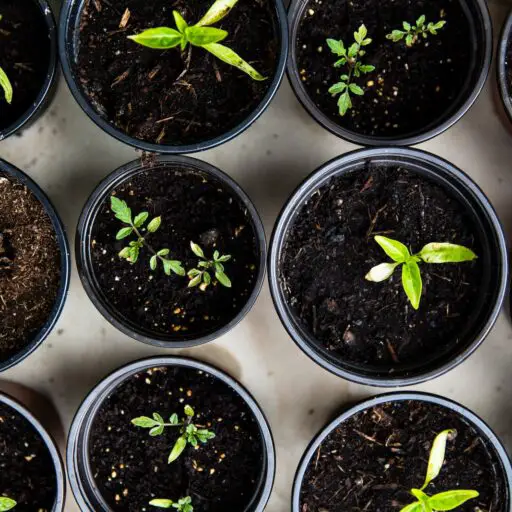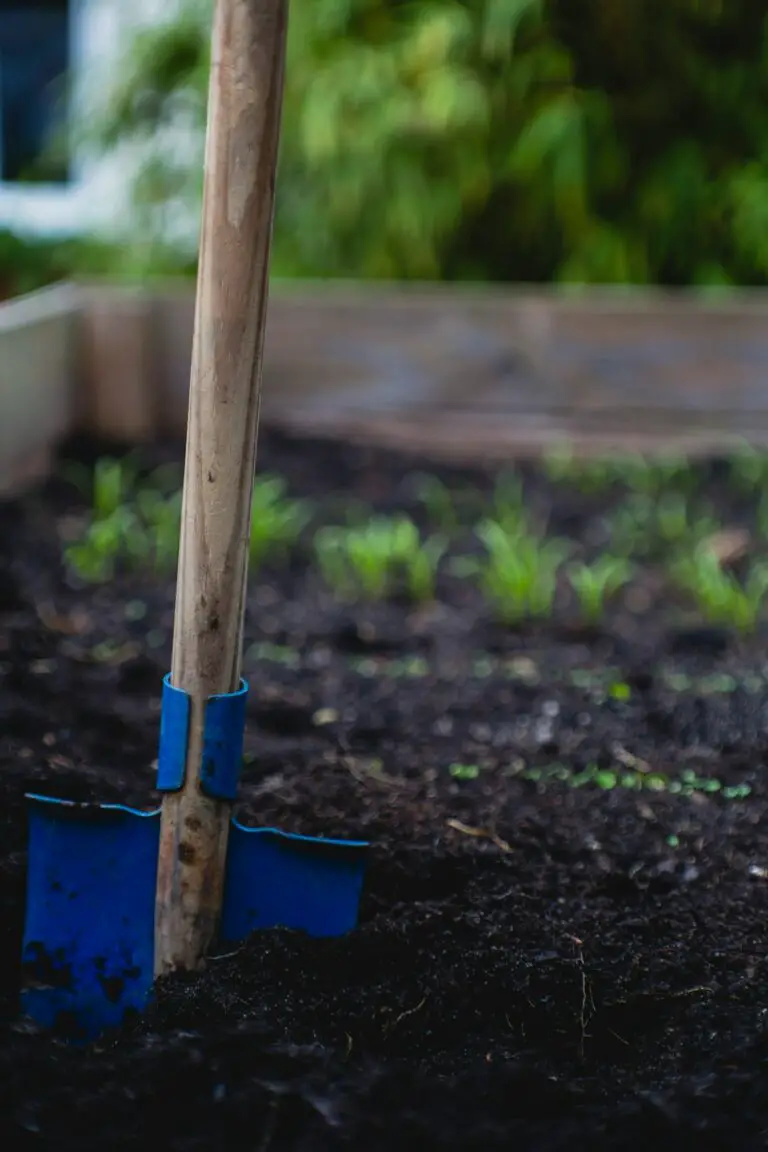Support our educational content for free when you purchase through links on our site. Learn more
Imagine turning a patch of unused land into a vibrant oasis where neighbors laugh, kids learn, and fresh veggies grow in abundance—all while building lasting friendships. That’s the magic of group gardening projects for beginners! Whether you’re a total newbie or someone looking to rally your community around a shared love of plants, this guide will walk you through everything from easy starter projects to managing your team and overcoming common challenges.
Did you know that community gardens can reduce neighborhood crime rates and boost mental well-being? 🌿 Intrigued? Stick around as we dig into the top 10 beginner-friendly group gardening projects, expert tips on organizing your crew, and sustainable practices that make your garden—and your community—thrive. Ready to get your hands dirty and your spirits lifted? Let’s grow together!
Key Takeaways
- Group gardening is perfect for beginners because it offers shared knowledge, reduced costs, and strong community bonds.
- Top 10 easy projects include herb spirals, salsa gardens, pollinator paradises, and vertical gardens—fun and rewarding for all skill levels.
- Effective organization and communication are essential to keep your group motivated and your garden flourishing.
- Engaging kids and teens with sensory gardens and interactive activities fosters lifelong gardening passion.
- Sustainable practices like composting and water conservation make your project eco-friendly and resilient.
- Real success stories show how group gardening transforms neighborhoods and lives.
Ready to start? Check out these essential gardening tools and seed kits to jumpstart your project:
- Seeds & Starters: Burpee Seeds on Amazon | Johnny’s Selected Seeds
- Tools: Fiskars Garden Tools | Corona Tools
- Gardening Books: Four Must-Have Beginner Gardening Books | Hachette Book Group
Table of Contents
- Quick Tips and Facts for Group Gardening Beginners 🌱✅
- The Roots of Group Gardening: A Beginner’s Guide to Community Garden History 🌿
- Why Group Gardening Projects Are Perfect for Beginners: Benefits and Joys 🌼
- 1. Top 10 Easy and Fun Group Gardening Projects for Beginners 🌻
- 2. How to Organize and Manage a Successful Group Gardening Project 🧑🌾👩🌾
- 3. Essential Tools and Supplies for Group Gardening Beginners 🛠️🌾
- 4. Choosing the Right Plants for Group Gardening Projects: Easy-to-Grow Picks 🌸
- 5. Tips for Engaging Kids and Teens in Group Gardening Activities 👧👦🌱
- 6. Overcoming Common Challenges in Group Gardening Projects: Solutions and Hacks 🐞🚫
- 7. Seasonal Group Gardening Ideas: What to Plant and When 🌞❄️
- 8. Sustainable and Eco-Friendly Practices for Group Gardening Beginners 🌍♻️
- 9. Inspiring Success Stories from Real Group Gardening Projects 🌟
- Conclusion: Growing Together for a Greener Tomorrow 🌳
- Recommended Links and Resources for Group Gardening Enthusiasts 🔗
- Frequently Asked Questions (FAQ) About Group Gardening for Beginners ❓
- Reference Links and Further Reading 📚
Quick Tips and Facts for Group Gardening Beginners 🌱✅
Starting a group gardening project can be incredibly rewarding, fostering community bonds and providing fresh, homegrown produce. Here at Community Gardening™, we’re passionate about helping beginners like you discover the joys of growing together. Before diving into our top group gardening project ideas, let’s equip you with some quick tips and fun facts:
Quick Tips:
- Start Small: Don’t bite off more than you can chew. Begin with a manageable project, like a raised bed of herbs or a small salad garden.
- Choose the Right Location: Community vegetable garden project need adequate sunlight (6-8 hours daily) and accessible water sources.
- Build a Strong Team: Assemble a group of enthusiastic individuals with diverse skills and interests.
- Plan Together: Collaboratively decide on the types of plants, garden design, and project timeline.
- Communicate Effectively: Regular meetings or online platforms can help keep everyone informed and engaged.
Fun Facts:
- Community gardening can increase physical activity levels and promote healthier eating habits. (Source: American Community Gardening Association)
- Studies have shown that community gardens can boost social connections and reduce crime rates in neighborhoods. (Source: University of California, Berkeley)
- Gardening can be a great stress reliever and mood booster! (Source: Psychology Today)
Now that you’re armed with these handy tips and fascinating facts, let’s explore the wonderful world of group gardening!
The Roots of Group Gardening: A Beginner’s Guide to Community Garden History 🌿

Before we dig into the how-to’s of group gardening, let’s take a trip down memory lane and explore the fascinating roots of this age-old practice. Understanding the history of community gardening can provide valuable context and inspiration for your own group endeavors.
Early Beginnings: From Necessity to Social Reform
The concept of communal gardening dates back centuries, often driven by necessity during times of hardship. In ancient civilizations, shared gardens provided sustenance and fostered a sense of community. During the 19th century, the rise of industrialization and urbanization led to widespread poverty and food insecurity in cities. This sparked the emergence of “allotment gardens” in Europe, providing working-class families with plots to grow their own food.
The American Experience: Victory Gardens and Beyond
In the United States, community gardening gained momentum during World War I and II with the creation of “Victory Gardens.” These gardens encouraged citizens to grow their own food, reducing pressure on the public food supply and boosting morale. Following the war, community gardens continued to thrive, evolving to address social issues like poverty, malnutrition, and community development.
The Modern Community Garden Movement
Today, community gardens are experiencing a resurgence in popularity, driven by factors like the growing interest in sustainability, local food movements, and the desire for social connection. Modern community gardens take on many forms, from traditional vegetable plots to innovative urban farms and schoolyard gardens. They serve as vibrant hubs for education, recreation, and community building.
Did you know? The American Community Gardening Association (ACGA) was founded in 1979 and has been instrumental in supporting and promoting community gardening initiatives across the United States. You can learn more about their work and resources on their website: https://www.communitygarden.org/
Why Group Gardening Projects Are Perfect for Beginners: Benefits and Joys 🌼
Embarking on a gardening journey with a group offers a unique set of advantages, especially for beginners. Let’s explore why group gardening projects are an excellent choice for those new to the world of green thumbs:
Shared Knowledge and Support
One of the most significant benefits of group gardening is the opportunity to learn from experienced gardeners within the group. Whether it’s a seasoned pro or someone who’s just a few seasons ahead, having access to shared knowledge and guidance can be invaluable. From choosing the right plants to troubleshooting pests and diseases, you’ll have a network of support to help you navigate the ups and downs of gardening.
Reduced Costs and Shared Resources
Gardening can sometimes feel like an expensive hobby, but group gardening helps mitigate costs by pooling resources. Sharing tools, seeds, soil, and other supplies can significantly reduce the financial burden on individual members, making gardening more accessible to everyone.
Increased Motivation and Accountability
Let’s face it, staying motivated and on track with a new hobby can be challenging. Group gardening provides built-in accountability and encouragement. Knowing that others are counting on you to do your part can be a powerful motivator, and the shared excitement of watching your garden flourish together is incredibly rewarding.
Community Building and Social Connection
Beyond the practical benefits, group gardening offers a fantastic opportunity to connect with like-minded individuals in your community. Working side-by-side, sharing stories, and celebrating successes together creates a sense of camaraderie and belonging. Many community gardens host potlucks, workshops, and other social events, further strengthening bonds and fostering a vibrant community spirit.
Access to Fresh, Healthy Food
Of course, one of the most tangible joys of gardening is reaping the rewards of your labor! Group gardening projects provide access to fresh, nutritious, and often organic produce. Sharing the bounty of your harvest with fellow gardeners and the wider community is an incredibly fulfilling experience.
1. Top 10 Easy and Fun Group Gardening Projects for Beginners 🌻
Ready to roll up your sleeves and get your hands dirty? Here are 10 beginner-friendly group gardening projects that are sure to spark joy and yield delicious results:
- The Herb Spiral: Create a stunning and functional herb garden by building a spiral-shaped raised bed. This design maximizes space and allows for different microclimates to suit various herbs.
- The Salsa Garden: Plant a vibrant mix of tomatoes, onions, cilantro, and peppers for a salsa garden that’s bursting with flavor. Imagine the delicious celebrations with your homegrown ingredients!
- The Pizza Garden: Who doesn’t love pizza? Plant tomatoes, peppers, onions, oregano, and basil for a pizza garden that will fuel your culinary adventures.
- The Three Sisters Garden: Embrace traditional Native American companion planting techniques with a Three Sisters garden. Grow corn, beans, and squash together, creating a mutually beneficial ecosystem.
- The Pollinator Paradise: Attract butterflies, bees, and other beneficial insects with a pollinator-friendly garden. Plant a diverse array of flowering plants, such as lavender, coneflowers, and sunflowers.
- The Sensory Garden: Engage multiple senses with a sensory garden filled with fragrant herbs, colorful flowers, and textured plants. This is a wonderful project for involving children and individuals with sensory sensitivities.
- The Salad Bar Garden: Create a continuous supply of fresh salad greens by planting a variety of lettuces, spinach, kale, and other leafy greens.
- The Tea Garden: Cultivate a soothing and aromatic tea garden with herbs like chamomile, mint, lemon balm, and lavender. Enjoy relaxing tea parties with your homegrown blends!
- The Vertical Garden: Maximize space and add visual interest with a vertical garden. Use trellises, pallets, or hanging planters to grow vining vegetables, herbs, or flowers.
- The Container Garden: Perfect for small spaces or limited mobility, container gardening allows you to grow a surprising variety of plants in pots, tubs, or raised beds.
2. How to Organize and Manage a Successful Group Gardening Project 🧑🌾👩🌾
Turning your group gardening dreams into a thriving reality requires careful planning and organization. Here’s a step-by-step guide to help you get started:
1. Define Your Goals and Vision
Before you even pick up a shovel, gather your group and have a brainstorming session. What do you hope to achieve with your garden? What types of plants do you want to grow? What are your long-term aspirations for the project? Clearly defining your goals and vision will provide a roadmap for your journey.
2. Choose a Location and Assess the Site
Selecting the right location is crucial for gardening success. Consider factors like sunlight exposure, water access, soil quality, and accessibility. Once you’ve chosen a site, assess its strengths and limitations to inform your garden design and plant choices.
3. Develop a Garden Design and Layout
Create a visual representation of your garden, incorporating your chosen plants, pathways, seating areas, and other features. Consider the mature size of plants to ensure adequate spacing and avoid overcrowding.
4. Create a Timeline and Task List
Break down your project into manageable phases, assigning tasks and deadlines to ensure steady progress. This will help you stay organized and accountable throughout the growing season.
5. Establish Communication Channels
Effective communication is key for any group project. Set up regular meetings, create a shared online calendar, or utilize messaging apps to keep everyone informed about upcoming tasks, events, and important updates.
6. Delegate Responsibilities and Rotate Roles
Distribute tasks based on individual skills, interests, and availability. Rotating roles periodically can prevent burnout and provide everyone with opportunities to learn and grow.
7. Celebrate Successes and Learn from Challenges
Gardening is a journey filled with both triumphs and setbacks. Take time to celebrate milestones, acknowledge individual contributions, and learn from any challenges you encounter along the way.
3. Essential Tools and Supplies for Group Gardening Beginners 🛠️🌾
Equipping your group with the right tools and supplies will set you up for gardening success. Here’s a list of essential items to get you started:
Basic Gardening Tools:
- Gardening Gloves: Protect your hands from thorns, blisters, and dirt.
- Hand Trowel: Ideal for digging small holes, transplanting seedlings, and weeding.
- Hand Rake: Perfect for smoothing soil, removing debris, and spreading mulch.
- Garden Fork: Useful for turning soil, aerating compacted areas, and mixing in amendments.
- Watering Can or Hose: Essential for providing your plants with the hydration they need.
Additional Helpful Tools:
- Wheelbarrow: Makes transporting soil, mulch, and other heavy materials a breeze.
- Garden Hoe: Efficiently removes weeds and creates furrows for planting.
- Pruning Shears: Essential for trimming back plants, harvesting herbs, and removing dead or diseased growth.
- Garden Stakes and Twine: Provide support for vining plants and keep your garden tidy.
Essential Supplies:
- Seeds or Seedlings: Choose a variety of plants that suit your climate, garden design, and taste preferences.
- Soil and Amendments: Ensure your plants have a nutrient-rich foundation with high-quality soil and amendments like compost or manure.
- Mulch: Helps retain moisture, suppress weeds, and regulate soil temperature.
- Fertilizer: Replenishes soil nutrients and promotes healthy plant growth.
- Pest and Disease Control: Be prepared to address common garden pests and diseases with organic or chemical solutions.
Tip: Consider creating a shared tool shed or storage system to keep your gardening equipment organized and accessible to all members.
4. Choosing the Right Plants for Group Gardening Projects: Easy-to-Grow Picks 🌸
Selecting the right plants is crucial for a successful and enjoyable group gardening experience, especially for beginners. Here are some easy-to-grow options that are sure to thrive in a community garden setting:
Vegetables:
- Tomatoes: A garden staple, tomatoes are relatively low-maintenance and produce an abundance of delicious fruit.
- Lettuce and Salad Greens: Quick-growing and easy to care for, lettuce and other salad greens provide a continuous harvest.
- Radishes: These root vegetables are incredibly fast-growing, making them a rewarding choice for beginners.
- Zucchini and Summer Squash: Prolific producers, zucchini and summer squash are relatively low-maintenance and provide a bountiful harvest.
- Beans: Easy to grow and incredibly versatile, beans are a nutritious addition to any garden.
Herbs:
- Basil: A culinary favorite, basil thrives in warm, sunny locations and releases a delightful aroma.
- Mint: A vigorous grower, mint is incredibly easy to care for and adds a refreshing flavor to beverages and dishes.
- Chives: These perennial herbs are low-maintenance and provide a mild onion flavor to culinary creations.
- Oregano: A hardy herb, oregano thrives in well-drained soil and adds a savory flavor to Mediterranean dishes.
- Parsley: A versatile herb, parsley is easy to grow and adds a fresh, bright flavor to a variety of dishes.
Flowers:
- Sunflowers: These cheerful giants are easy to grow from seed and attract beneficial pollinators.
- Zinnias: These colorful annuals are low-maintenance and provide a long-lasting display of blooms.
- Marigolds: Known for their vibrant colors and pest-repelling properties, marigolds are a cheerful addition to any garden.
- Cosmos: These delicate-looking flowers are surprisingly resilient and attract butterflies with their vibrant blooms.
- Lavender: Known for its soothing aroma and beautiful purple flowers, lavender is a drought-tolerant and low-maintenance choice.
Tip: Consider your local climate and choose plants that are well-suited to your region’s growing conditions.
5. Tips for Engaging Kids and Teens in Group Gardening Activities 👧👦🌱
Gardening is a wonderful way to connect children and teens with nature, teach them valuable life skills, and foster a love for fresh food. Here are some tips for creating engaging and educational gardening experiences for younger generations:
Make it Fun and Interactive:
- Create a Sensory Garden: Engage multiple senses with fragrant herbs, colorful flowers, and textured plants.
- Build a Bug Hotel: Provide a habitat for beneficial insects and observe the fascinating world of creepy crawlies.
- Set Up a Worm Composting Bin: Learn about decomposition and create nutrient-rich compost with the help of wiggly worms.
- Host a Scavenger Hunt: Hide garden-themed clues and prizes throughout the garden for an interactive adventure.
- Organize a Taste Test: Sample different varieties of fruits, vegetables, and herbs grown in the garden.
Assign Age-Appropriate Tasks:
- Watering: Even the youngest gardeners can help with watering using child-sized watering cans.
- Planting Seeds: Let kids get their hands dirty by planting seeds in pots or directly into the ground.
- Weeding: Teach children how to identify and remove weeds, instilling a sense of responsibility.
- Harvesting: Allow kids to experience the joy of harvesting ripe fruits, vegetables, and herbs.
- Composting: Involve older children in collecting food scraps and maintaining the compost bin.
Foster a Sense of Ownership:
- Assign Individual Plots or Containers: Give each child their own space to care for and cultivate.
- Let Kids Choose Plants: Allow children to select a few plants they’d like to grow, fostering a sense of ownership.
- Decorate the Garden: Encourage creativity by letting kids paint rocks, build birdhouses, or create other garden decorations.
- Celebrate Successes: Acknowledge and praise children’s efforts, no matter how small.
6. Overcoming Common Challenges in Group Gardening Projects: Solutions and Hacks 🐞🚫
Even with the best intentions, group gardening projects can encounter bumps along the way. Here are some common challenges and practical solutions to help you navigate them successfully:
1. Inconsistent Participation:
- Solution: Establish clear expectations for participation from the outset. Create a flexible schedule that accommodates varying schedules and commit to regular communication to keep everyone informed and engaged.
2. Pests and Diseases:
- Solution: Implement preventative measures like crop rotation, companion planting, and attracting beneficial insects. Address outbreaks promptly with organic or chemical solutions, depending on the severity and your group’s preferences.
3. Watering Challenges:
- Solution: Invest in a soaker hose or drip irrigation system for efficient and consistent watering. Create a watering schedule and assign specific individuals or groups to take turns.
4. Conflicting Opinions:
- Solution: Encourage open communication and respectful dialogue. Establish a decision-making process that involves all members and strive for consensus whenever possible.
5. Lack of Resources:
- Solution: Explore grant opportunities, host fundraisers, or partner with local businesses for donations of tools, supplies, or expertise.
6. Limited Accessibility:
- Solution: Choose a location that is accessible to individuals with disabilities or mobility challenges. Consider raised beds, vertical gardens, or container gardening to accommodate varying needs.
7. Seasonal Group Gardening Ideas: What to Plant and When 🌞❄️
Maximize your group gardening efforts by aligning your planting schedule with the ebb and flow of the seasons. Here’s a seasonal guide to inspire your planting plans:
Spring:
- Vegetables: Lettuce, spinach, radishes, carrots, peas, beans
- Herbs: Basil, cilantro, parsley, dill, chives
- Flowers: Pansies, violas, snapdragons, calendula
Summer:
- Vegetables: Tomatoes, peppers, cucumbers, zucchini, squash, eggplant
- Herbs: Oregano, thyme, rosemary, sage, lavender
- Flowers: Zinnias, sunflowers, cosmos, marigolds
Fall:
- Vegetables: Kale, collard greens, spinach, lettuce, radishes, turnips
- Herbs: Cilantro, parsley, dill, chives
- Flowers: Mums, asters, pansies, violas
Winter:
- Vegetables: Some cool-season vegetables, like spinach and kale, can be grown in milder climates or with protection.
- Herbs: Rosemary, thyme, sage, and other hardy herbs can often overwinter in milder climates.
- Flowers: Consider planting bulbs in the fall for a colorful spring display.
8. Sustainable and Eco-Friendly Practices for Group Gardening Beginners 🌍♻️
Embrace sustainable gardening practices to minimize your environmental impact and create a healthier garden ecosystem. Here are some eco-friendly tips for your group gardening project:
Conserve Water:
- Water Deeply and Less Often: Encourage deep root growth and reduce evaporation by watering deeply but less frequently.
- Use Mulch: Apply a layer of organic mulch, like wood chips or straw, to retain moisture and suppress weeds.
- Harvest Rainwater: Set up rain barrels or cisterns to collect rainwater for irrigation.
Build Healthy Soil:
- Compost Food Scraps and Yard Waste: Create nutrient-rich compost to amend your soil and reduce landfill waste.
- Practice Crop Rotation: Rotate crops each season to prevent soil depletion and interrupt pest cycles.
- Avoid Chemical Pesticides and Herbicides: Opt for organic pest and disease control methods to protect beneficial insects and pollinators.
Reduce Waste:
- Start Seeds Indoors: Reduce reliance on plastic cell packs by starting seeds indoors in biodegradable pots.
- Use Natural Materials: Choose natural materials, like wood, stone, and metal, for garden structures and pathways.
- Compost or Donate Excess Produce: Share the bounty of your harvest with food banks or shelters to reduce food waste.
9. Inspiring Success Stories from Real Group Gardening Projects 🌟
Looking for some inspiration to fuel your group gardening endeavors? Here are a few heartwarming success stories from real community gardens that demonstrate the transformative power of growing together:
-
The Edible Schoolyard Project: Founded by renowned chef Alice Waters, The Edible Schoolyard Project has created hundreds of school gardens across the United States, teaching children about food, farming, and healthy eating habits.
-
Ron Finley’s Gangsta Garden: In South Central Los Angeles, Ron Finley transformed a neglected strip of land into a thriving community garden, inspiring others to reclaim their neighborhoods and grow their own food.
-
The Green Bronx Machine: Founded by educator Stephen Ritz, The Green Bronx Machine has created over 100 indoor and outdoor gardens in the South Bronx, empowering students and community members to grow their own food and transform their lives.
These inspiring stories highlight the profound impact that group gardening can have on individuals, communities, and the environment.
Conclusion: Growing Together for a Greener Tomorrow 🌳

Well, fellow green thumbs, we’ve journeyed through the rich history, practical how-tos, and inspiring stories behind group gardening projects for beginners. From choosing the right plants to managing your team and overcoming challenges, you’re now equipped with everything you need to start your own thriving garden community. Remember, the magic of group gardening isn’t just in the harvest—it’s in the friendships you cultivate, the knowledge you share, and the joy of growing together.
If you ever felt overwhelmed by where to start, just recall our quick tips: start small, communicate openly, and embrace the learning curve with a smile. Whether you’re planting a salsa garden or building a pollinator paradise, the key is to enjoy the process and celebrate every little victory.
And speaking of victories, don’t forget the power of involving kids and teens—it’s a fantastic way to nurture the next generation of gardeners and create lasting memories. Plus, sustainable practices ensure your garden flourishes not just today but for years to come.
So, what are you waiting for? Grab your gloves, rally your crew, and dig in! Your community—and your taste buds—will thank you.
Recommended Links and Resources for Group Gardening Enthusiasts 🔗
Ready to gear up or dive deeper? Check out these trusted resources and products to help your group gardening project bloom:
- Seeds and Starter Kits:
- Gardening Tools:
- Books for Beginners:
- Composting Supplies:
- Watering Solutions:
Frequently Asked Questions (FAQ) About Group Gardening for Beginners ❓

What are the easiest plants for a beginner group gardening project to start with?
Starting simple is the secret sauce! Easy-to-grow plants like lettuce, radishes, tomatoes, basil, and sunflowers are fantastic for beginners. They require minimal care, grow quickly, and provide visible results that keep motivation high. These plants also tolerate a range of conditions, making them perfect for group projects where gardeners have varying skill levels. Plus, many are versatile in the kitchen, so your harvest won’t go to waste!
How do I organize a community garden in my neighborhood for people of all skill levels?
Organizing a community garden is like conducting a symphony—everyone has a part to play. Start by gathering interested neighbors and defining shared goals. Choose an accessible site with good sunlight and water access. Develop a garden plan that includes plots for individual and group use, and assign roles based on skills and availability. Establish clear communication channels—think regular meetings or a group chat—and create a flexible schedule to accommodate different commitments. Don’t forget to incorporate educational workshops and social events to keep the vibe inclusive and fun!
What are the benefits of participating in a group gardening project for mental and physical health?
Gardening is a natural mood booster and stress buster. Physically, it promotes moderate exercise—digging, planting, weeding—that improves strength, flexibility, and cardiovascular health. Mentally, it reduces anxiety and depression by fostering mindfulness and connection to nature. Socially, group gardening combats loneliness and builds community, which is vital for emotional well-being. Studies have shown that community gardening can improve overall quality of life and even cognitive function in older adults. So, it’s a win-win for body, mind, and soul!
Read more about “What Are the 7 Economic Benefits of Community Gardens? 🌱”
What are some fun and engaging ways to get children involved in a beginner group gardening project?
Kids love hands-on fun! Create sensory gardens with fragrant and colorful plants, build bug hotels to explore insect life, or set up worm composting bins to teach about recycling. Assign age-appropriate tasks like watering, seed planting, and harvesting. Organize garden-themed scavenger hunts or taste tests to make learning interactive. Giving kids their own garden plots or containers fosters responsibility and pride. Remember, celebrating their efforts with small rewards or garden parties keeps enthusiasm blooming!
How can group gardening projects contribute to environmental sustainability?
Group gardening projects promote sustainability by encouraging organic growing methods, reducing food miles, and fostering biodiversity. Composting food scraps enriches soil naturally and reduces landfill waste. Water conservation techniques like drip irrigation and rainwater harvesting minimize resource use. Planting pollinator-friendly flowers supports vital ecosystems. By sharing resources and knowledge, group gardens reduce individual environmental footprints and inspire eco-conscious habits that ripple through communities.
Read more about “Discover 15 Sustainable Gardening Practices for a Greener Future 🌱”
What are the best ways to handle conflicts or differing opinions within a gardening group?
Conflict is natural in any group, but it can be managed with clear communication and respect. Establish group guidelines early on that emphasize listening and compromise. Use democratic decision-making processes, such as voting or consensus-building, to resolve disputes. Rotate leadership roles to give everyone a voice. If tensions arise, hold open forums where concerns can be aired constructively. Remember, the shared goal of a flourishing garden can unite even the most divergent opinions.
Reference Links and Further Reading 📚
- American Community Gardening Association: https://www.communitygarden.org/
- University of California, Berkeley Urban Agriculture: https://ucanr.edu/site/small-farms-and-urban-agriculture/urban-agriculture
- Psychology Today on Gardening and Mental Health: https://www.psychologytoday.com/us/blog/urban-survival
- Burpee Seeds Official Website: https://www.burpee.com/
- Johnny’s Selected Seeds: https://www.johnnyseeds.com/
- Fiskars Garden Tools: https://www.fiskars.com/en-us/gardening-and-yard-care/products
- Corona Tools: https://www.coronatools.com/
- Hachette Book Group – Four Must-Have Beginner Gardening Books: https://www.hachettebookgroup.com/storey/four-must-have-beginner-gardening-books/
Happy gardening, and remember: the best gardens grow with love, patience, and a little dirt under your nails! 🌿🌻



